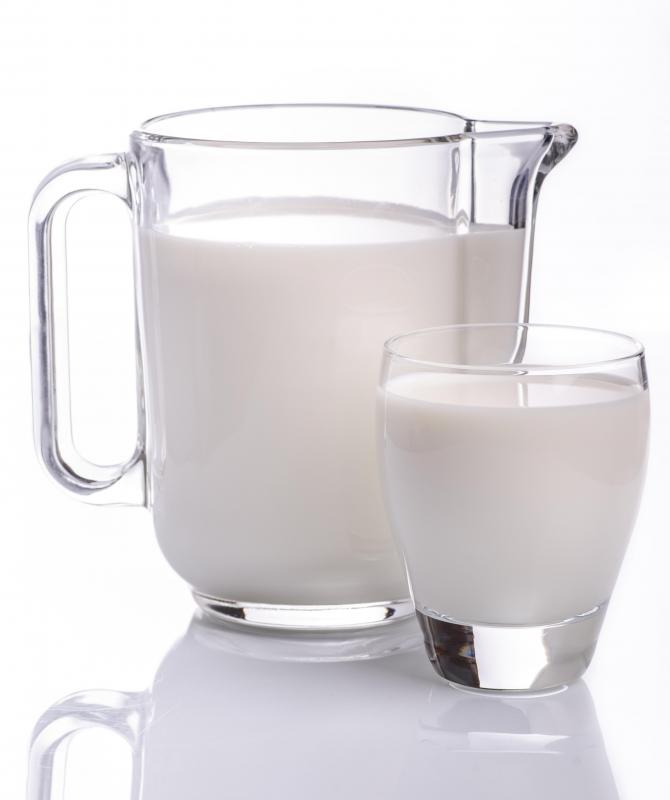At WiseGEEK, we're committed to delivering accurate, trustworthy information. Our expert-authored content is rigorously fact-checked and sourced from credible authorities. Discover how we uphold the highest standards in providing you with reliable knowledge.
What Are the Treatments for an Allergic Reaction to Dairy?
The most common treatment for an allergic reaction to dairy is an epinephrine injection. These needles are sold as auto injectors for ease of use and transportation. Dairy allergies are caused by a multitude of factors, but genetics is the main cause of most food allergies. Allergic reactions to dairy occur when the body creates immunoglobulin antibodies in response to the protein in the dairy product.
Epinephrine, carried inside an auto injector needle, is the usual way to treat an allergic reaction to dairy when it occurs. People with dairy allergies typically carry these needles with them at all times. Each needle holds approximately 300 to 500 mcg of epinephrine, which takes about 10 seconds to absorb into the bloodstream.

One risk of the epinephrine injector is that it can cause damage to the area into which it is injected. Intravenous injection of the drug can also cause rapid heartbeat. After epinephrine administration, the allergy sufferer must seek professional medical attention.
Another way one can minimize an allergic reaction to dairy is to receive a series of allergy injections. Each injection carries a tiny amount of the allergen, which allows the body to build up a tolerance. These injections may not work for every patient, but they usually reduce the symptoms in case one is accidentally exposed to dairy.

The most effective way to treat an allergic reaction to dairy is to completely avoid the substance. Dairy is found in many products, so one should conduct a careful examination of each food label. Milk, ricotta cheese, cream, milk powder, certain infant formulas, butter, cheese, yogurt, and ice cream are foods that should be avoided, for instance. There are several food substitutions that can be used in lieu of dairy. Soymilk, coconut milk, almond milk, and almond ice cream are acceptable products for those with dairy allergies.

There is a difference between an actual dairy allergy and lactose intolerance. Allergies can be severe, if not fatal. Symptoms of an allergic response to dairy include vomiting, diarrhea, stomach pain, wheezing, and throat closure. In contrast, lactose intolerance is very common among certain ethnic groups. It produces stomach cramping and diarrhea, but it does not cause life-threatening symptoms.
Other serious symptoms of a dairy allergy are stomach bleeding, asthma, eczema, pneumonia, or anaphylaxis. Some people have much more severe reactions than others. The most effective way one can test for a milk allergy is to see an allergist. Keeping a food diary is also helpful to see which foods cause reactions.
AS FEATURED ON:
AS FEATURED ON:













Discuss this Article
Post your comments